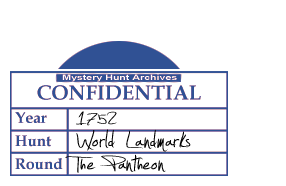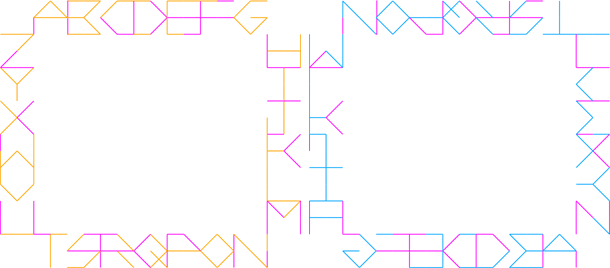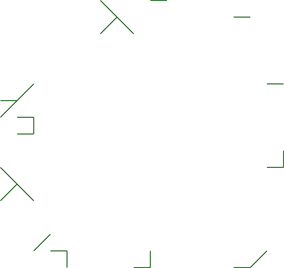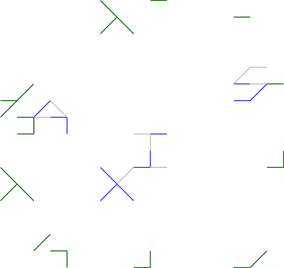
Ceres
by Craig Kasper
ANSWER: AXIS
The image provided is, with a few notable exceptions, an amalgamation of two separate stylized alphabets starting at one of the corners of the rectangle. Where the alphabets share line segments, the segments are purple, while orange line segments belong exclusively to the first alphabet, and blue segments belong exclusively to the second alphabet.

The first alphabet is oriented normally, but the second has transformations applied to each of the four segments:
- A-G are reflected left-to-right
- H-M are reflected top-to-bottom
- N-T are rotated 180 degrees
- U-Z are rotated 90 degrees clockwise
When all of the line segments belonging to either alphabet are removed, there are 24 purple segments remaining, divided equally between the horizontal and vertical alphabet sections.

These can be identified as belonging to six duplicated clusters, each of which appears in both a horizontal and vertical section. Moving these clusters orthogonally so that they correspond results in four partially completed line forms. These can be completed by one of the four transformations mentioned previously and form letters which fall into the range corresponding to those transformations. From left-to-right:
- Reflected left-to-right, forming an A
- Rotated 90 degrees clockwise, forming an X
- Reflected top-to-bottom, forming an I
- Rotated 180 degrees, forming an S

These completed letters spell the answer AXIS.
